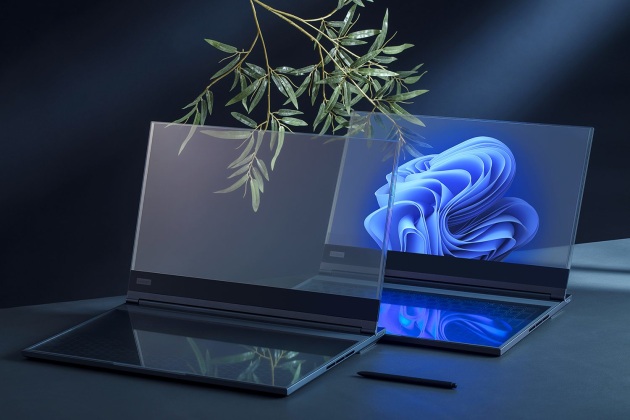Lenovo debuts notebook you can peer straight through
Lenovo has used the annual Mobile World Congress in Barcelona to debut a prototype notebook with a screen you can peer straight through.

The ThinkBook Transparent Display Laptop is a 17.3-inch notebook that does exactly what it says on the tin, with its bezel-less 17.3-inch MicroLED display offering up to 55 percent transparency when its pixels are set to black and turned off.
As the screen's pixels light up, the display becomes less and less see-through, until eventually, you’re looking at a completely opaque white surface with a peak brightness of 1,000 nits.
It's worth noting that the ThinkBook is still in the prototype stage, and it has a few flaws still - the most notable is it's currently not possible to manually set the whole laptop screen to be opaque, regardless of whether it’s showing white content, black content, or any colors in between.
That said, it does seem to be a bit of a solution looking for a problem - after all, how often do you look at your screen and wonder what's going on behind it? But, according to Lenovo, the technology has benefits for creatives in particular, including digital artists who can use it as a sort of transparent tracing pad, sketching on the lower half of the laptop where the keyboard is.
The company gives an example of an architect being able to sit on location and sketch a building without taking their eyes off the environment in front of them.
The technology in itself is not new, with Samsung debuting a a transparent laptop concept over a decade ago at CES 2010, and even Lenovo itself exhibiting a transparent smartphone concept in 2015.
The biggest challenge for the technology is laptops themselves, which have a much greater need for resolution as they're primarily designed to show text, compared to a TV designed to show images.
One other interesting feature of the prototype is the completely flat touch keyboard, rather than a physical keyboard with traditional keys. The keyboard is actually a projection which disappears when you bring a stylus close to the drawing surface or when you step away from the laptop entirely.
This then becomes a flat surface to sketch on, similar to what you’d find on a Wacom tablet.
The ThinkBook also has some AI capabilities, with a camera on the rear side of the laptop able to apply object recognition on devices placed behind it. The results of this can then be shown on-screen.
For now, the company has no plans to bring the device to market, but does hope that future Laptop designs may incorporate some of the technology.

